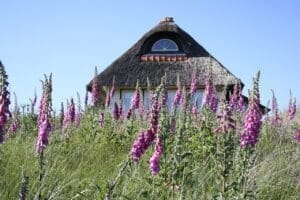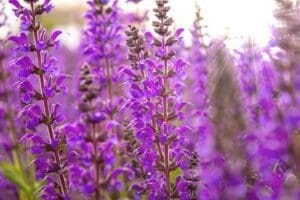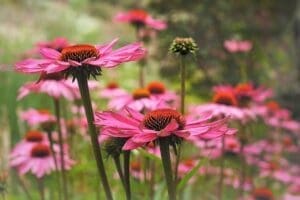Designing a woodland edge-style garden offers a beautiful way to create a naturalistic landscape that harmoniously blends with the surrounding environment.
This type of garden is crafted to emulate the natural transition between a forest and an open meadow or field. It provides a habitat for various wildlife and imparts an organic, tranquil ambiance to your outdoor space.
Affiliate Disclaimer: As an Amazon Associate, I earn from qualifying purchases.
9 Features of A Woodland Edge Style Garden

- Layered planting
A woodland edge garden often features layered planting, with tall trees and shrubs in the back and shorter perennials and groundcovers in the front. - Naturalistic design
Woodland edge gardens are designed to look natural and organic, with curved pathways and irregular plant groupings. - Dappled shade
Since woodland edge gardens are typically located at the edge of a forest or tree line, they often receive dappled shade throughout the day. - Native plants
Using native plants is a key feature of woodland edge gardens, as they are well-adapted to the local climate and provide a habitat for local wildlife. - Moist, fertile soil
Woodland edge plants typically thrive in moist, fertile soil that is rich in organic matter. - Mulch
Mulch is often used to help retain moisture in the soil and provide a naturalistic look to the garden. - Seasonal interest
Woodland edge gardens can be designed to provide interest throughout the seasons, with bulbs for spring, ferns and hostas for summer, and colourful foliage for autumn. - Wildlife habitat
By using native plants and providing shelter and food sources, woodland edge gardens can provide habitat for a variety of wildlife, including birds, insects, and small mammals. - Natural boundaries
Woodland edge gardens often incorporate natural boundaries, such as hedges, stone walls, or tree lines, to create a seamless transition between the garden and the surrounding environment.
Top Tip: Mimic natural woodlands by thinking in layers: tall trees, understory shrubs, and ground cover. Patience is key – your garden will mature over years, becoming a wildlife haven.
How To Perfect The Woodland Edge Style Garden


When designing a woodland edge-style garden, aim for a naturalistic and layered appearance that seamlessly blends with the surrounding landscape.
Incorporate naturalistic design elements like meandering paths, irregularly shaped garden beds, and clusters of plants resembling the forest understory.
Choose native plants adapted to the local climate and soil conditions, and layer your planting to add depth and dimension. By following these design principles, you can create a beautiful woodland edge garden that harmonizes effortlessly with its environment.
Use Trees To Create Dappled Shade
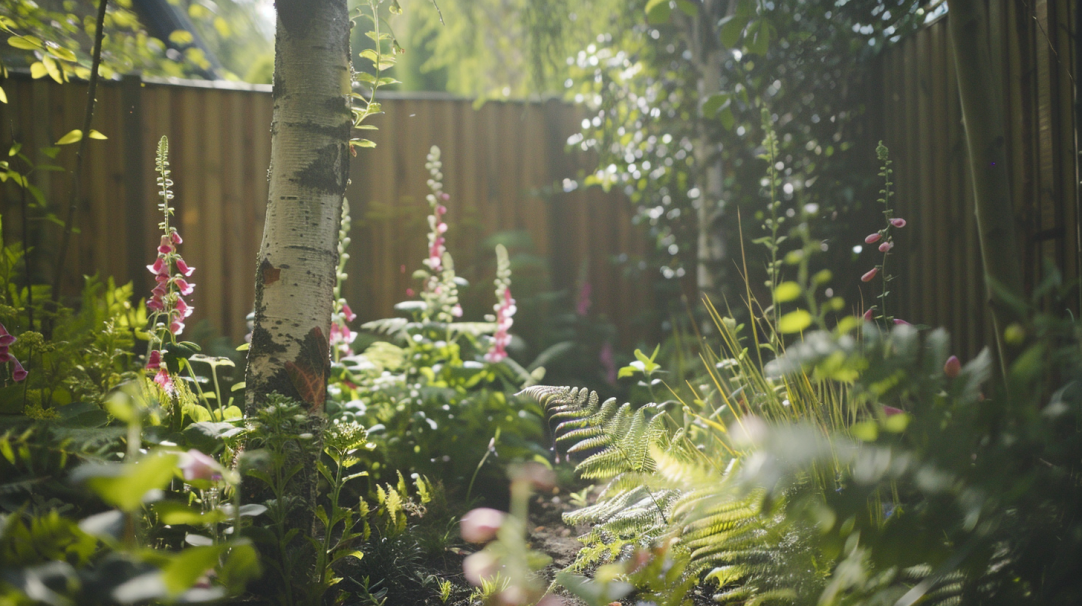

• English oak (Quercus robur)
• Silver birch (Betula pendula)
• Hornbeam (Carpinus betulus)
• Rowan (Sorbus aucuparia)
• Wild cherry (Prunus avium)
• Hazel (Corylus avellana)
When selecting trees for a woodland edge garden, it’s essential to choose species that enhance the beauty and diversity of your outdoor space. However, it’s equally important to consider the size of your garden. Planting trees that are too large for your space can lead to overcrowding, shading out other plants, and costly maintenance issues.
Before planting, research the growth habits and mature size of your chosen trees to ensure they will thrive and complement your garden design. Opting for trees that are appropriately sized for your garden will help create a harmonious and sustainable woodland edge landscape.
You might also be interested in: Trees for Small Gardens
Use Shrubs To Create Layers
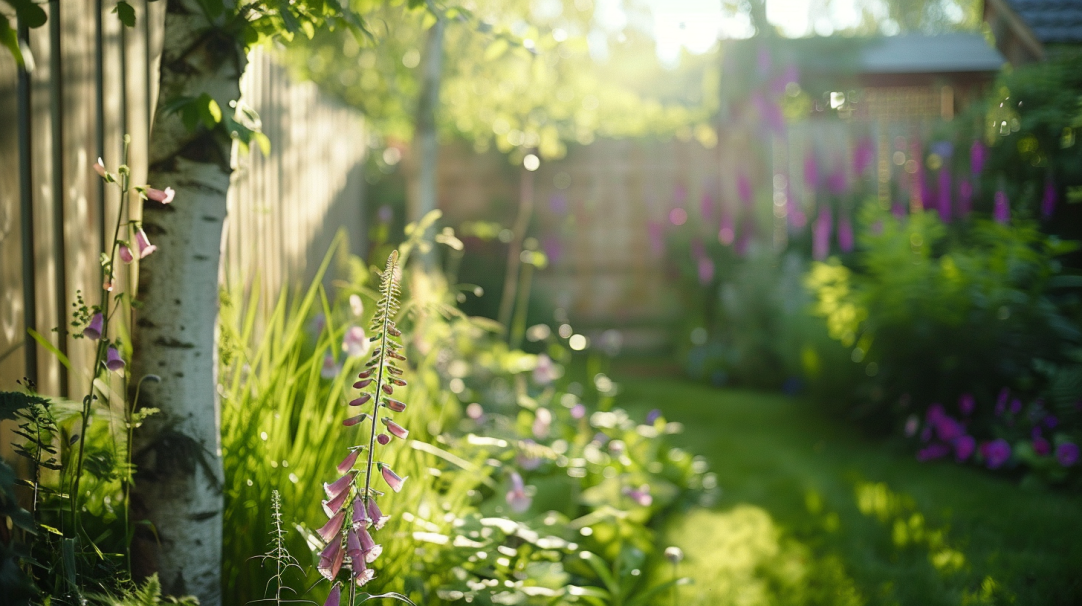

• Viburnum opulus (Guelder rose)
• Mahonia aquifolium (Oregon grape)
• Euonymus europaeus (Spindle)
• Cornus sanguinea (Dogwood)
• Ribes sanguineum (Flowering currant)
• Hydrangea petiolaris (Climbing hydrangea)
Use Perennials Suitable For a Woodland
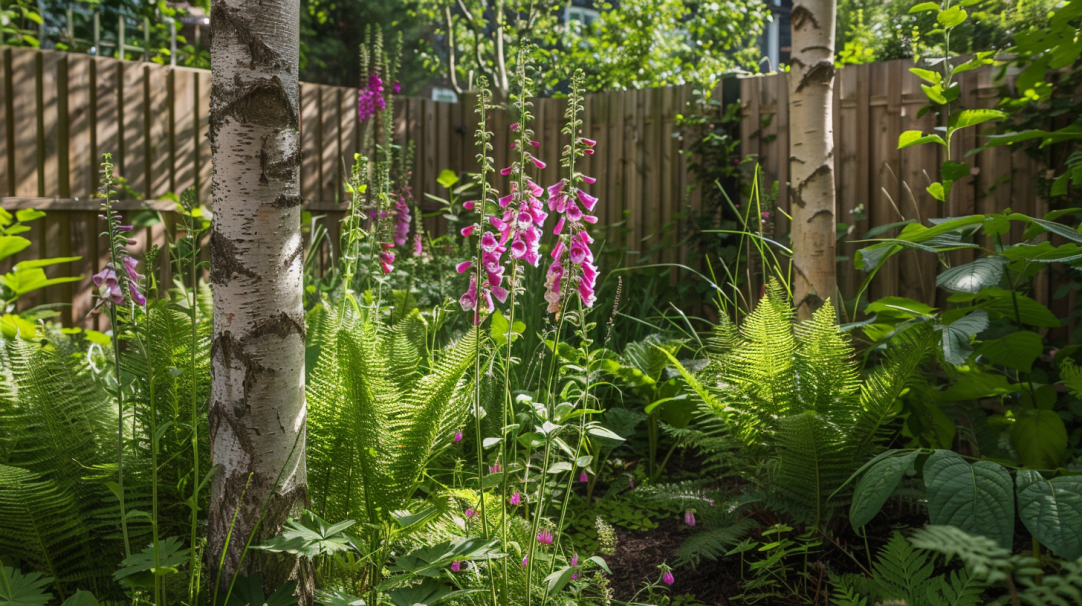

• Aquilegia (Columbine)
• Astrantia (Masterwort)
• Epimedium (Barrenwort)
• Geranium (Cranesbill)
• Pulmonaria (Lungwort)
• Anemone nemorosa (Wood anemone)
• Digitalis purpurea (Foxglove)
• Helleborus foetidus (Stinking hellebore)
utilise Groundcover Plants
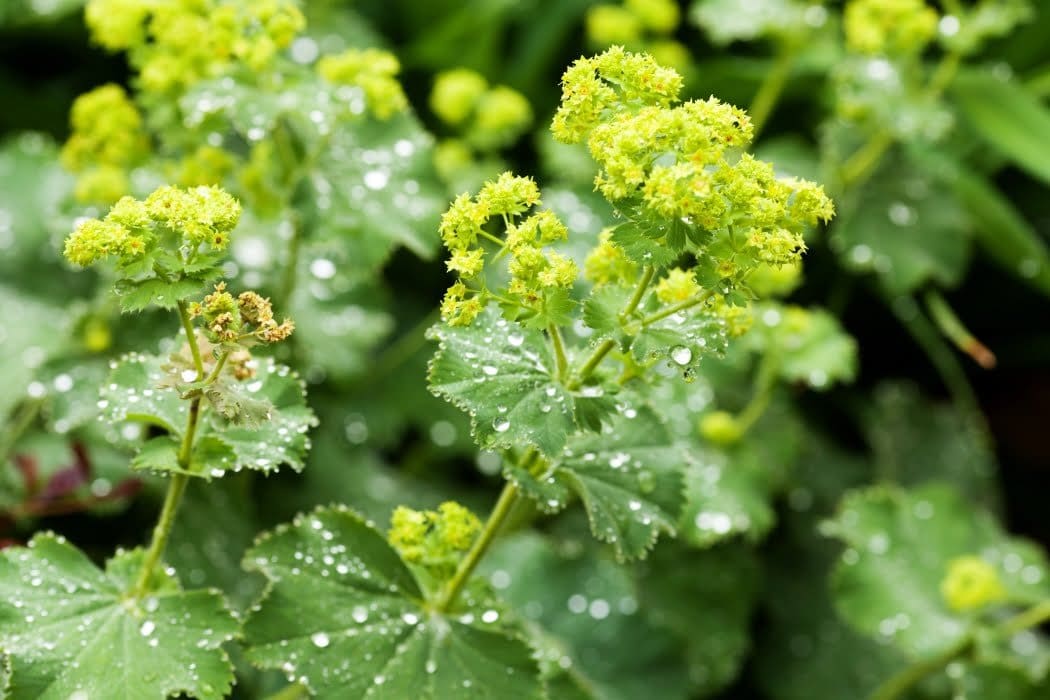

• Ajuga reptans (Bugle)
• Tiarella cordifolia (Foamflower)
• Vinca minor (Lesser periwinkle)
• Lamium maculatum (Dead nettle)
• Geranium macrorrhizum (Bigroot geranium)
• Alchemilla mollis (Lady’s mantle)
By selecting a mix of these plants and trees, you can create a beautiful and naturalistic woodland edge style garden that is well-adapted to the UK climate.
Keep Hard Landscaping Natural


In a woodland edge garden, achieving a naturalistic look is best accomplished by incorporating natural materials like stone, wood, or gravel for any hard landscaping features.
Meandering paths introduce an element of mystery and discovery, while seating areas crafted from natural materials such as wooden benches or tree stumps offer places to rest and appreciate the surroundings.
Water features like ponds or fountains not only attract wildlife but also contribute to a serene atmosphere. When it comes to lighting, opt for strategic placement to highlight key features while avoiding harsh or bright lights that might detract from the garden’s natural feel.
Attract Wildlife
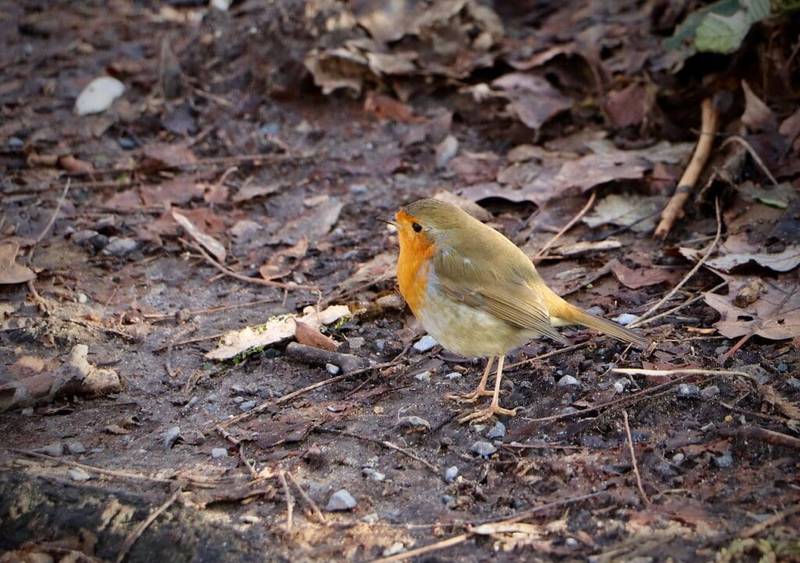

Creating a woodland edge garden offers a chance to attract local wildlife by integrating plants and features that support the ecosystem.
To entice pollinators such as bees and butterflies, select nectar and pollen-producing plants, and install bird baths and feeders to attract birds.
Encourage beneficial insects by planting native flowers and offer shelter for small mammals by maintaining leaf litter and planting low-growing shrubs. By incorporating these wildlife-friendly features, you’ll establish a sustainable and enchanting outdoor space that supports a diverse range of local wildlife.
Benefits of Woodland Edge Style Gardens
By crafting a naturalistic outdoor space that seamlessly integrates with the surrounding landscape, you can establish a tranquil and rejuvenating environment, offering a retreat from the daily hustle and bustle.
Using native plants adapted to the local climate and soil conditions enables you to create a sustainable and low-maintenance garden, requiring less watering and fertilizer compared to traditional gardens.
Additionally, a woodland edge garden aids in reducing soil erosion, filtering pollutants from the air and water, and sequestering carbon, thus making it an environmentally friendly and advantageous choice for gardeners.
Maintaining Your Woodland Edge Style Garden
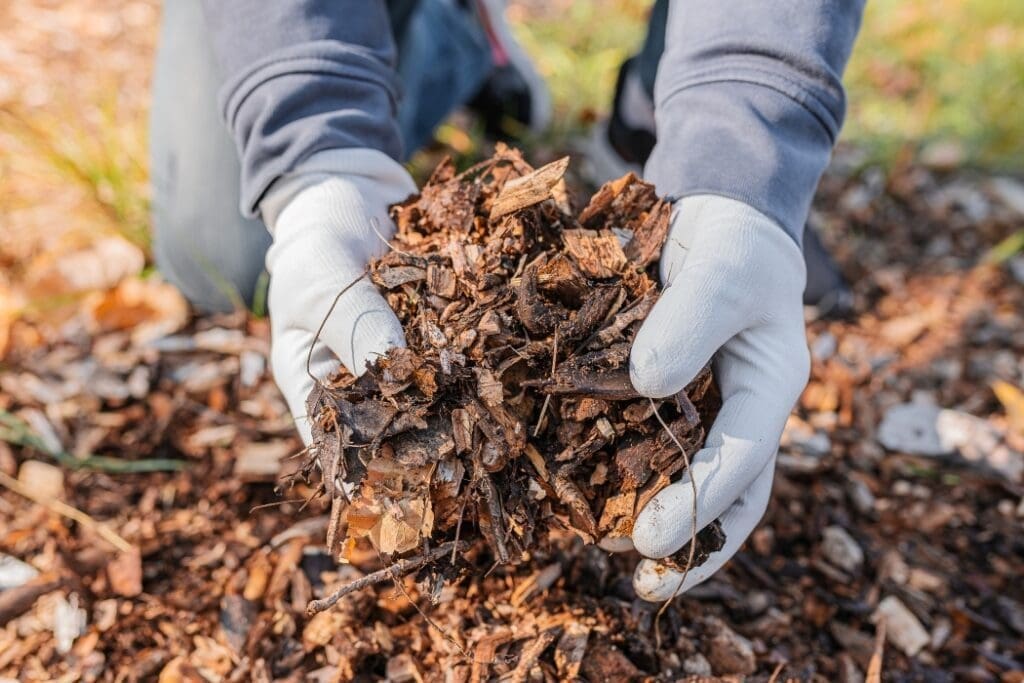

While a woodland edge garden is intended to have a natural and untamed appearance, it still requires some maintenance to ensure its health and beauty. Here are some key tasks:
- Regular pruning is essential to maintain the shape and size of trees and shrubs, as well as to remove any dead or diseased branches.
- Weeding is crucial to prevent invasive plants from dominating and to preserve the ecosystem’s balance.
- Mulching with organic matter helps retain moisture, suppress weeds, and enhance soil health.
- Watering new plants regularly until they are established is important, as well as ensuring sufficient watering during dry spells.
- Regular checks and maintenance tasks throughout the year are necessary to keep your woodland edge garden looking its best. Adjust your approach based on changing seasons and weather conditions.
Final Thoughts
Incorporating a woodland edge style into your garden design offers the opportunity to create a stunning and tranquil outdoor space, serving as a sanctuary for wildlife and a delight for spending time in.
With thoughtful planning, meticulous attention to detail, and some straightforward tips and tricks, you can fashion a naturalistic garden that pays homage to the beauty of the UK’s woodlands and hedgerows.
Recommended Books
Woodland Gardening: Designing a low-maintenance, sustainable edible woodland garden
Beth Chatto’s Shade Garden: Shade-Loving Plants for Year-Round Interest
The Woodland Garden – Robert Gillmore
FAQs – Creating a Woodland Edge Style Garden
Q. How do I make my garden look like a forest/woodland?
Creating a woodland garden entails planting a mixture of trees, shrubs, and undergrowth plants, all of which would naturally occur in a woodland environment. Start by planting trees – both deciduous and evergreens for variety – but keep in mind to plant smaller or slower-growing species to avoid them becoming too large for your garden. Choose native, shade-loving shrubs for the understory. Incorporate a variety of ferns, woodland flowers, and ground cover plants to create a rich, layered look. Paths and water features that mimic natural forest streams can also help your garden evoke the feeling of a woodland.
Q. How can I make my garden attractive to wildlife?
A garden that mimics a natural habitat, like a woodland, will naturally attract a variety of wildlife. You can encourage this by providing food, water, and shelter sources. Planting native species will offer familiar food sources for local insects, birds, and other animals. Install bird feeders, birdbaths, and even birdhouses. To attract beneficial insects, consider creating a bug hotel or a log pile. A small pond can attract amphibians and offer a water source for various animals.
Q. What is the best soil for a woodland style garden?
Most woodland plants prefer well-draining, fertile soil rich in organic matter. This mimics the leaf litter and decomposed plant material that would naturally be found on the forest floor. If your soil is heavy clay, consider amending it with plenty of compost and other organic matter. Some woodland plants, such as rhododendrons or camellias, prefer slightly acidic soil, so do your research on your chosen plants’ preferences.
Q. Are woodland style gardens low maintenance?
While no garden is entirely maintenance-free, woodland style gardens can be relatively low maintenance once they’re established. They are designed to mimic natural ecosystems, which are largely self-sustaining. Once your plants are established, they should require less watering than traditional gardens, as the layered planting scheme helps to conserve moisture. Pruning needs will be relatively minimal – just enough to maintain the health of your plants and keep paths clear. The main task will be the addition of organic mulch annually to imitate the natural decomposition process of a forest floor.





